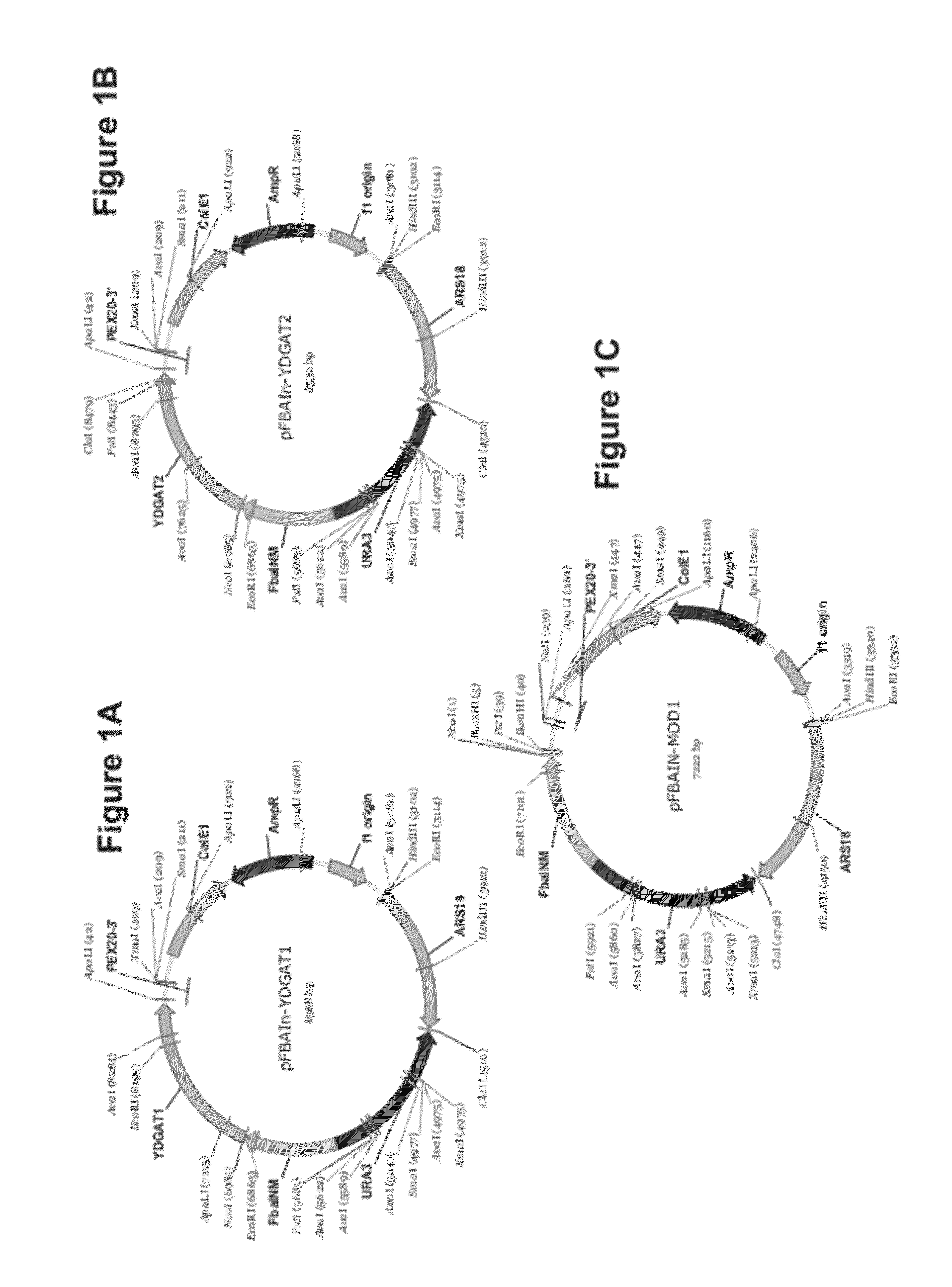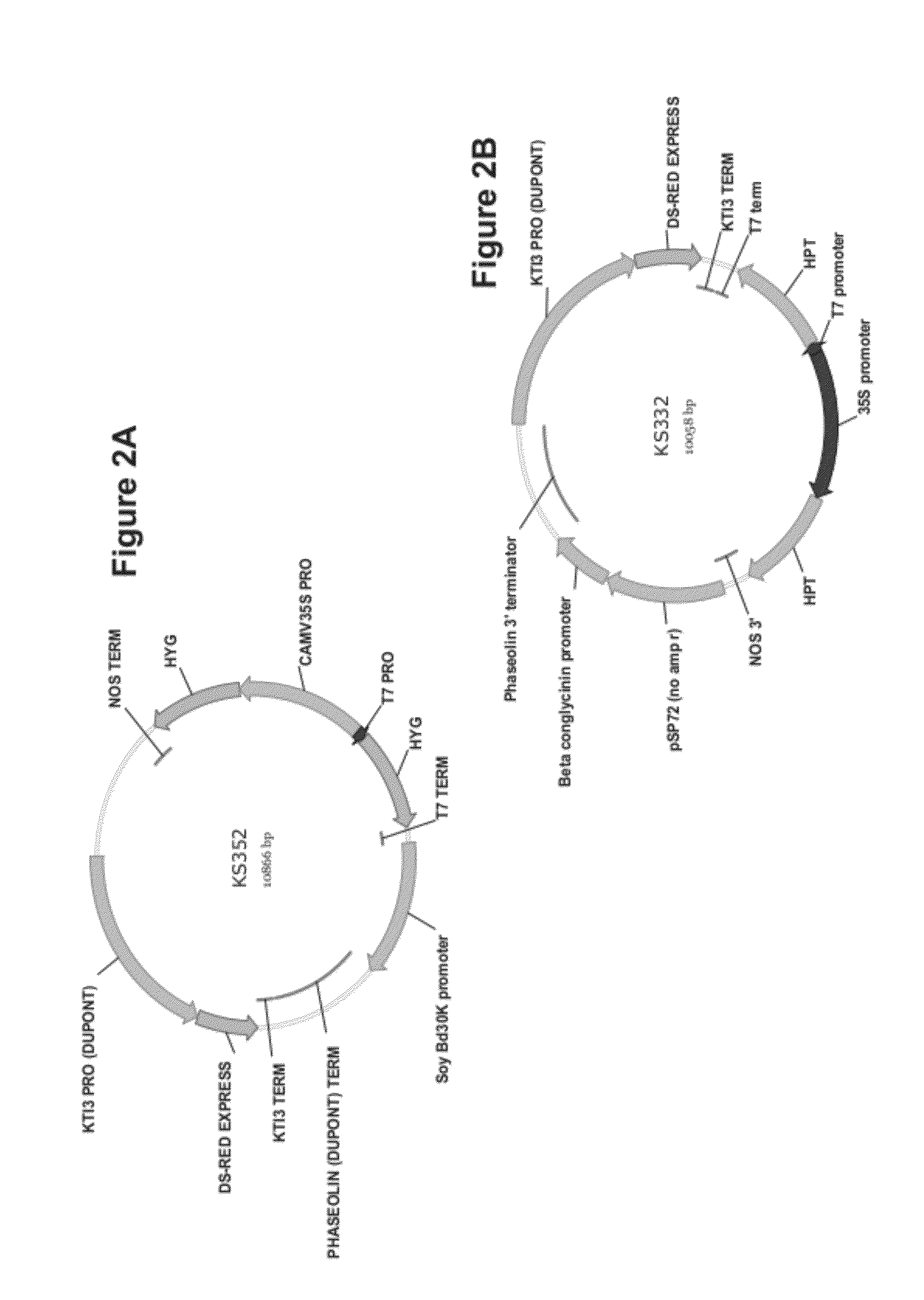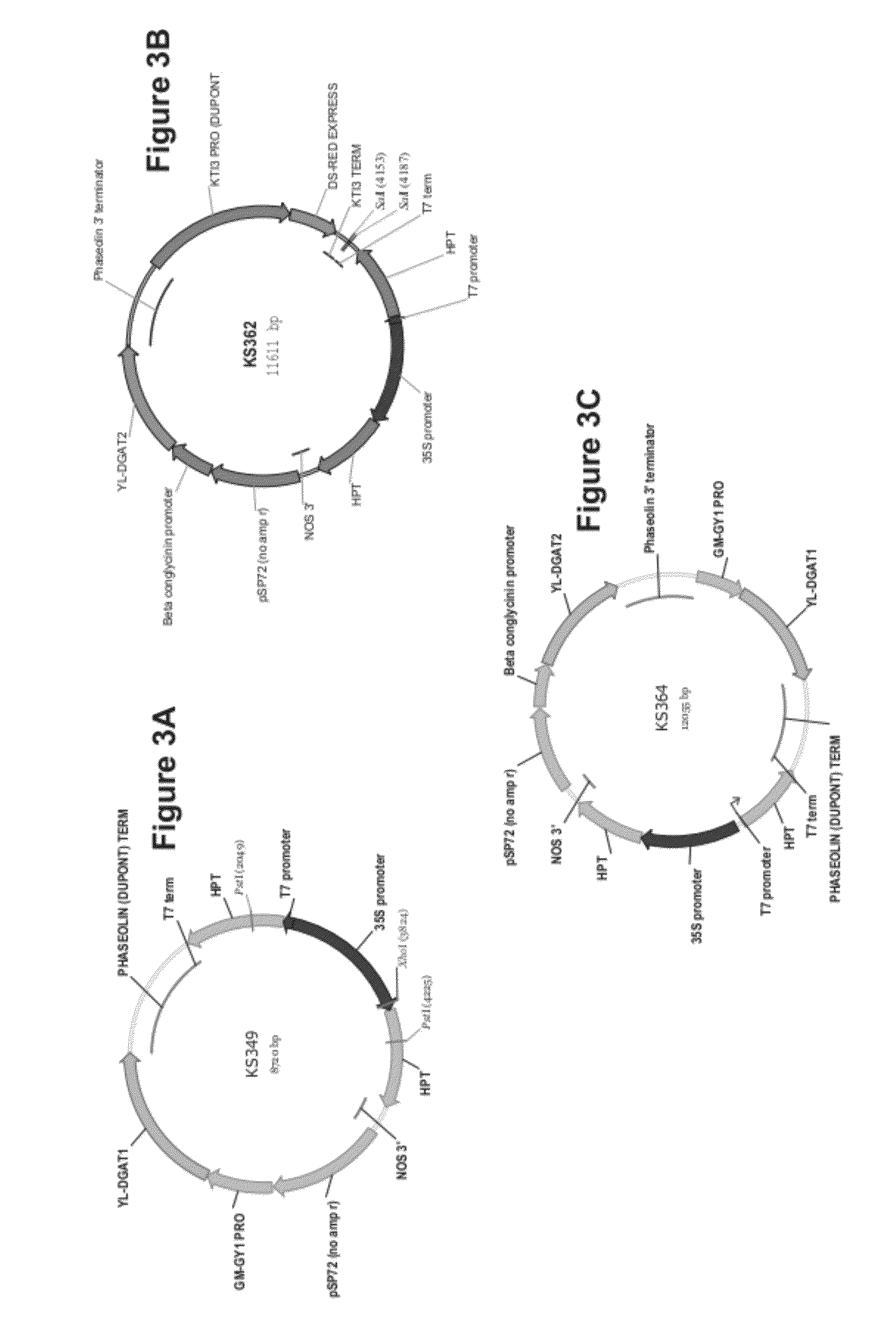Dgat genes from yarrowia lipolytica for increased seed storage lipid production and altered fatty acid profiles in soybean
a technology of yarrowia lipolytica and dgat genes, applied in the field of biotechnology, can solve the problems of slow and expensive introduction into elite lines by traditional breeding techniques, serious limitations of using mutagenesis to alter fatty acid composition and content, etc., and achieve the effect of increasing the total fatty acid conten
- Summary
- Abstract
- Description
- Claims
- Application Information
AI Technical Summary
Benefits of technology
Problems solved by technology
Method used
Image
Examples
example 1
Expression of Yarrowia lipolytica DGAT Genes in Saccharomyces cerevisiae
[0194]The DGAT1 gene (SEQ ID NO:1) of Yarrowia lipolytica was excised from plasmid vector pYDA1 (SEQ ID NO:2) by restriction digestion with NcoI and NotI. The ends of DNA fragment were completely filled in using T4 DNA polymerase (Promega, Madison, Wis., USA) and ligated into the unique Not I site of pY75 (SEQ ID NO:3). Prior to its use for cloning the pY75 vector had been linearized with NotI, filled in with T4 DNA polymerase and dephosphorylated with shrimp alkaline phosphatase (NEB, Beverly, Mass., USA). Plasmid DNA was isolated using standard techniques and restriction digests with EcoRI were conducted to identify plasmid clones in which the start codon was in proximity to the 3′ end of the GPD promoter in pY75 (sense orientation of the DGAT1 gene). This plasmid is henceforth referred to as pY75 YL DGAT1 (SEQ ID NO:4). The construction of pYDA1 is described in PCT Publication No. WO 2006 / 052914, which is he...
example 2
Cloning the Yarrowia lipolytica DGAT1 And DGAT2 into Yarrowia lipolytica Expression Vectors
[0204]The present Example describes the generation of pFBAIN-YDG1 and pFBAIN-YDG2, comprising a chimeric FBAINm::YDGAT1::PEX20 gene and a chimeric FBAINm::YDGAT2::PEX20 gene, respectively (FIGS. 1A and 1B). These were designed for overexpression of the DGAT1 and DGAT2 in Yarrowia lipolytica.
[0205]Oligonucleotides YDGAT1-F (SEQ ID NO:12) and YDGAT-R (SEQ ID NO:13) were designed and synthesized to allow amplification of the DGAT10RF from Yarrowia lipolytica genomic DNA (isolated from strain ATCC Accession No. 20362, purchased from the American Type Culture Collection (Rockville, Md.)), while oligonucleotides YDGAT2-F (SEQ ID NO:14) and YDGAT2-R (SEQ ID NO:15) were designed and synthesized to allow the amplification of the DGAT2 ORF.
[0206]The PCR reactions, with Yarrowia lipolytica genomic DNA as template, were individually carried out in a 50 μL total volume comprising: 1 μL each of 20 μM forwa...
example 3
Overexpression of Yarrowia lipolytica DGAT1 And DGAT2 Genes in Yarrowia lipolytica Strain Y2224
[0210]The present Example describes increased fatty acid content, and modification to the relative abundance of each fatty acid species, in Yarrowia lipolytica strain Y2224 that was transformed to co-express either the Yarrowia lipolytica DGAT1 (SEQ ID NO:16) or the Yarrowia lipolytica DGAT2 (SEQ ID NO:17). Strain Y2224 is a FOA resistant mutant from an autonomous mutation of the Ura3 gene of wild type Yarrowia strain ATCC Accession No. 20362.
[0211]Generation Of Strain Y2224: Strain Y2224 was isolated in the following manner: Yarrowia lipolytica ATCC Accession No. 20362 cells from a YPD agar plate (1% yeast extract, 2% bactopeptone, 2% glucose, 2% agar) were streaked onto a minimal media plate (75 mg / L each of uracil and uridine, 6.7 g / L YNB with ammonia sulfate, without amino acid, and 20 g / L glucose) containing 250 mg / L 5-FOA (5-fluorouracil-6-carboxylic acid monohydrate; Zymo Research)....
PUM
| Property | Measurement | Unit |
|---|---|---|
| temperature | aaaaa | aaaaa |
| temperature | aaaaa | aaaaa |
| pH | aaaaa | aaaaa |
Abstract
Description
Claims
Application Information
 Login to View More
Login to View More - R&D
- Intellectual Property
- Life Sciences
- Materials
- Tech Scout
- Unparalleled Data Quality
- Higher Quality Content
- 60% Fewer Hallucinations
Browse by: Latest US Patents, China's latest patents, Technical Efficacy Thesaurus, Application Domain, Technology Topic, Popular Technical Reports.
© 2025 PatSnap. All rights reserved.Legal|Privacy policy|Modern Slavery Act Transparency Statement|Sitemap|About US| Contact US: help@patsnap.com



